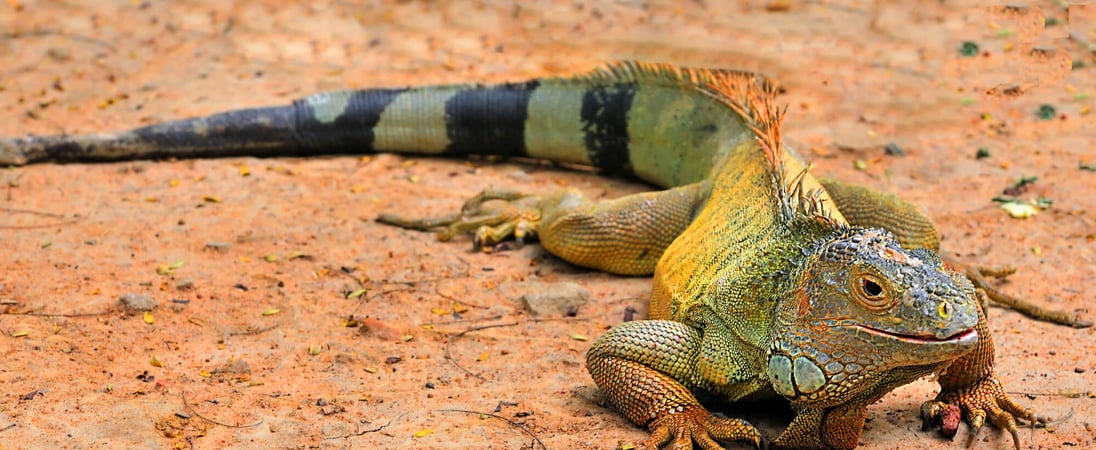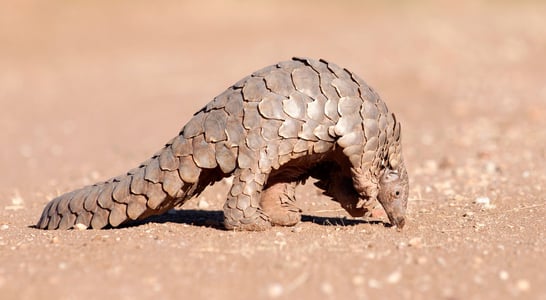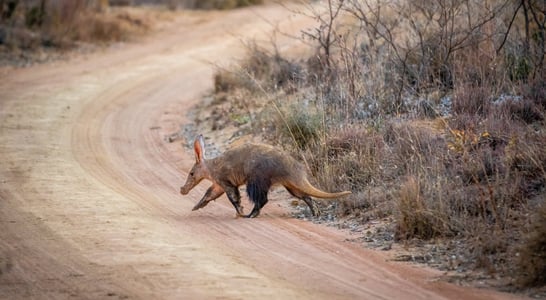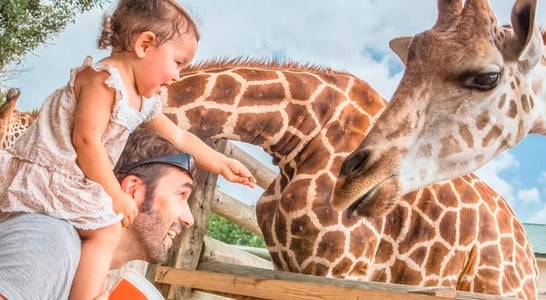
National Reptile Awareness Day
Share your enthusiasm for reptiles by pampering your pet, visiting a zoo, or volunteering at a local rescue to get to know these often-misunderstood creatures.
National Reptile Awareness Day, celebrated on October 21st, brings attention to our cold-blooded friends. This day is all about recognizing reptiles’ unique role in the ecosystem and raising awareness about the threats they face.
From controlling pests to being an integral part of the food chain, reptiles have a vital role in maintaining ecological balance. However, they often face challenges like habitat loss, illegal hunting, and the pet trade, which threaten their survival.
This special day also seeks to change the way people view reptiles. Despite the common fear and misunderstanding, reptiles are fascinating creatures that have adapted to survive in various environments over millions of years.
Through education and awareness efforts, National Reptile Awareness Day aims to dispel myths and encourage a deeper appreciation for these animals. Activities like visiting zoos, participating in conservation projects, or learning about reptiles can help spread the word and support their conservation.
Understanding and respecting reptiles is crucial for their conservation and the health of our ecosystem. Whether by volunteering at a conservation organization or sharing information on social media, everyone can contribute to their well-being.
Let’s use this day to celebrate their diversity and importance, promoting actions that help protect them for future generations.
How to Celebrate National Reptile Awareness Day
Celebrating National Reptile Awareness Day can be an adventure for the curious and the courageous. These activities include visiting zoos to learn about different species, donating to organizations dedicated to reptile welfare, raising awareness through social media, and participating in conservation programs.
The goal is to foster a greater appreciation for reptiles and to contribute to the conservation of these vital animals and their habitats.
History of National Reptile Awareness Day
National Reptile Awareness Day has its roots in the broader environmental and conservation movements that gained momentum in the mid-20th century, particularly with the passage of the Endangered Species Act in 1966 and efforts to ban DDT in the United States following Rachel Carson’s influential book, “Silent Spring.”
While the specific origins of National Reptile Awareness Day are not well-documented, it is clear that the day emerged from a desire to protect reptiles and their habitats, which are increasingly threatened by human activity and environmental changes.
Reptiles, which include snakes, lizards, crocodiles, turtles, and tortoises, play a crucial role in our ecosystems. They are important for controlling pests, pollinating plants, and contributing to nutrient cycling.
However, misconceptions and fears about reptiles, such as unwarranted phobias towards snakes and lizards, have led to their mistreatment and harm.
National Reptile Awareness Day aims to address these issues by educating the public about the value of reptiles, promoting conservation efforts, and encouraging appreciation and understanding of these often misunderstood creatures.
Ideas to Get Involved
Adopt a Scaly Buddy: Dive into the world of reptilian pet ownership! Scaly buddies require little maintenance, but their cool factor is sky-high. Just remember, these aren’t your average furry friends—they’re cooler.
Go on a National Park Safari: Pretend you’re on a real-life treasure hunt for reptiles in their natural habitats. Places like Joshua Tree or the Everglades are perfect for this. Just don’t forget your adventure hat!
Become a Reptile Detective: Use apps like Audubon Reptiles & Amphibians to identify any reptiles you spot. It’s like Pokémon Go but with real-life scaly creatures.
Host a Reptile-Themed Party: Invite friends over for a day dedicated to celebrating these fascinating creatures. Think reptile-themed decorations, snacks, and maybe even a documentary viewing.
Zoo’s Who: Visit your local zoo to learn from the experts. Some zoos have special events and talks, especially for National Reptile Awareness Day. You might even get to play scientist for a day with activities like the Detroit Zoo offers.
Crafty Conservation: Get creative with reptile-themed crafts. Whether painting a turtle shell or creating your lizard costume, it’s a fun way to spread awareness.
Educate and Elevate: Share cool reptile facts or conservation messages on social media. Use hashtags like #NationalReptileAwarenessDay to join the wider conversation.
National Reptile Awareness Day FAQs
Why do some cultures associate reptiles with supernatural powers?
In various cultures, reptiles are linked to gods, omens, and mystical abilities.
In Hinduism, the cobra represents divine energy and protection. In parts of Africa, crocodiles are believed to be guardians of sacred waters, and in medieval Europe, lizards were thought to bring good luck if they climbed on a person.
Some Native American tribes viewed the turtle as a symbol of the Earth itself. These beliefs highlight how reptiles have shaped myths and folklore for centuries.
What’s the strangest reptile-related celebration in the world?
One of the most unusual is the Nag Panchami festival in India. Celebrated in July or August, people honor snakes by offering them milk, flowers, and prayers.
Live cobras are often handled without harm, as devotees believe the snakes will bring good fortune if treated with respect.
In contrast, in Nicaragua, some communities hold an annual “running of the iguanas,” where people chase and catch iguanas as part of a cultural tradition.
Have reptiles ever been used as spies?
Yes! During the Cold War, the CIA experimented with using lizards and snakes as biological surveillance devices because of their ability to blend in with the environment.
Some scientists even proposed attaching miniature microphones to reptiles to eavesdrop on enemy territories.
Though these ideas never became practical, reptiles continue to be studied for military and intelligence purposes, such as using infrared-sensing snakes to detect warm bodies in search-and-rescue missions.
What are some of the strangest reptile superpowers?
Reptiles have bizarre abilities that seem almost supernatural. The Texas horned lizard can shoot blood from its eyes to deter predators.
The flying dragon lizard glides through the air using flaps of skin. The Mary River turtle breathes through its genitals, allowing it to stay underwater for hours.
Some geckos can detach their tails and their skin to escape predators.
Why are turtles sometimes considered immortal?
Turtles can live for over 100 years, but what makes them truly remarkable is their slow aging process.
Unlike humans, they don’t show typical signs of aging such as weaker bones or organ failure. Some species, like the Galápagos tortoise, appear to stop aging altogether.
In Chinese mythology, the turtle represents immortality because of its long lifespan and unchanging nature.
Have reptiles ever influenced technology?
Yes! Scientists have studied geckos’ feet to develop adhesive materials that mimic their ability to stick to surfaces.
Snake movement has inspired robots designed for search-and-rescue missions.
Some desert lizards, like the thorny devil, can collect water through their skin, inspiring designs for self-watering materials.
Reptiles’ adaptations continue to shape innovations in robotics, medical science, and engineering.
What’s the biggest reptile ever recorded?
The Titanoboa, a prehistoric snake, reached 42 feet long and weighed over 2,500 pounds.
It lived around 60 million years ago in what is now South America. In modern times, the saltwater crocodile holds the title for the largest living reptile, growing up to 23 feet and weighing over 2,000 pounds.
Can reptiles really predict the weather?
Folk beliefs suggest reptiles can sense weather changes. Turtles are said to dig deeper into the mud before a harsh winter.
Some alligators are believed to react to incoming storms by vocalizing more.
While not scientifically proven, reptiles are highly sensitive to temperature and barometric pressure changes, which may influence their behavior before weather shifts.
Why do some lizards “play dead”?
Some reptiles use thanatosis, or “playing dead,” to avoid predators. The hognose snake dramatically rolls onto its back, emits a foul smell, and stays motionless.
The blue-tongued skink does something similar, flipping over and sticking out its tongue to appear lifeless. This trick makes them less appealing to predators that prefer live prey.
What’s the rarest reptile in the world?
The Abingdon Island Giant Tortoise, also known as Lonesome George, was the last of its species before dying in 2012.
Another contender is the Golden Gecko, native to Vietnam, which is rarely seen in the wild. The Madagascar Leaf-Tailed Gecko is almost impossible to spot due to its perfect camouflage.
Also on ...
View all holidaysNational Apple Day
Gobble down an apple, make a delicious apple dessert or savory dish, or join an apple day event for food, games, activities and more during apple season.
International Day of the Nacho
A crunchy, cheesy snack that's perfect for sharing with friends and family, whether you're watching the big game or having a movie night!
Trafalgar Day
Commemorating a historic maritime clash and the valorous individuals who shaped the course of a nation's destiny.
We think you may also like...
National Learn About Butterflies Day
These delicate, winged creatures, with their vibrant colors and graceful flight, bring a touch of enchantment to the natural world.








